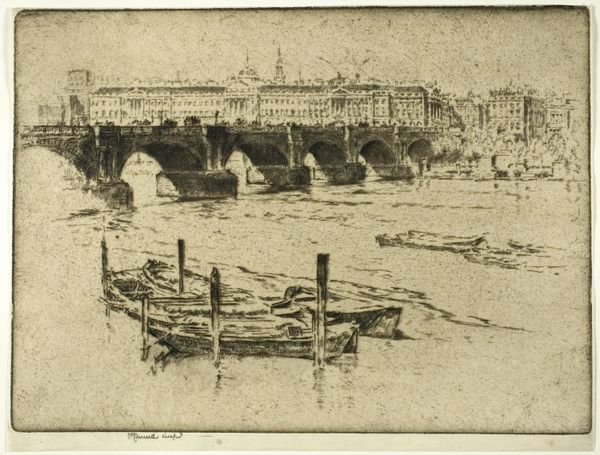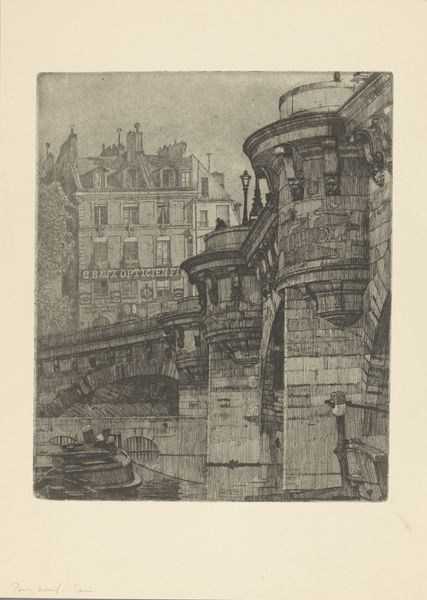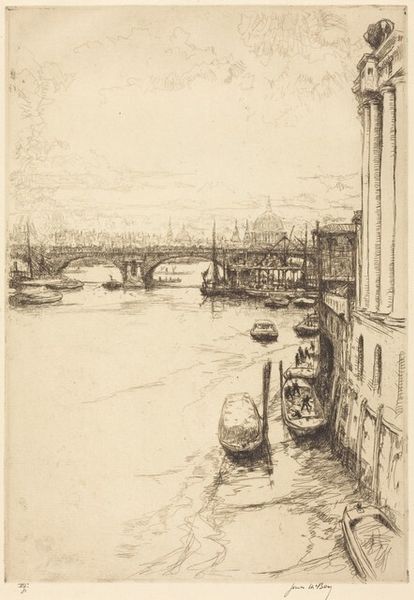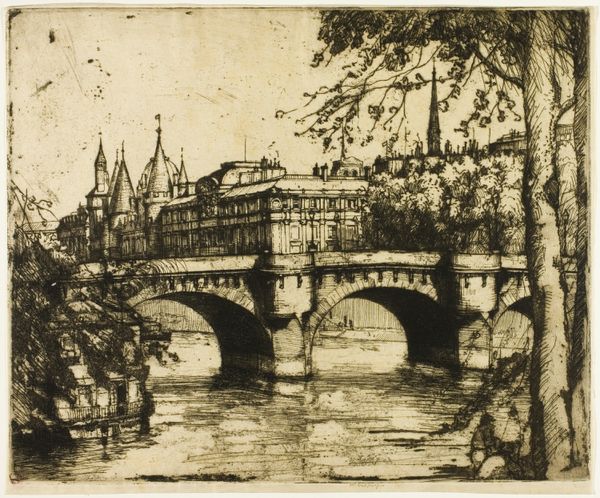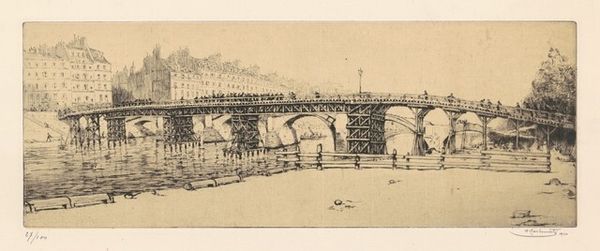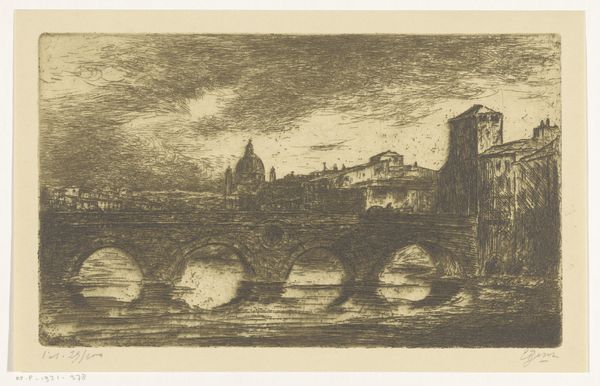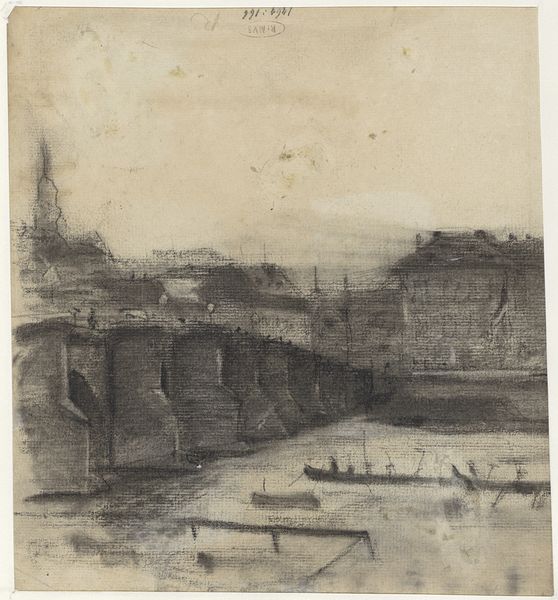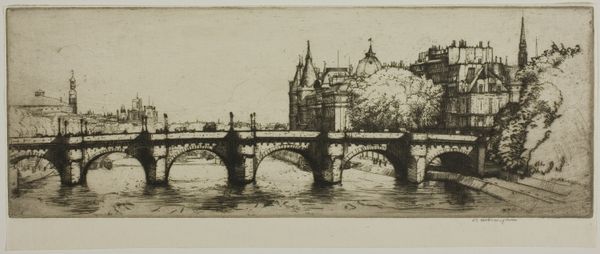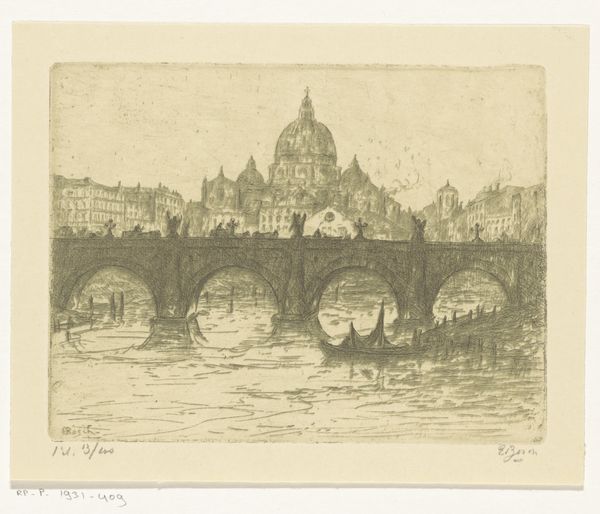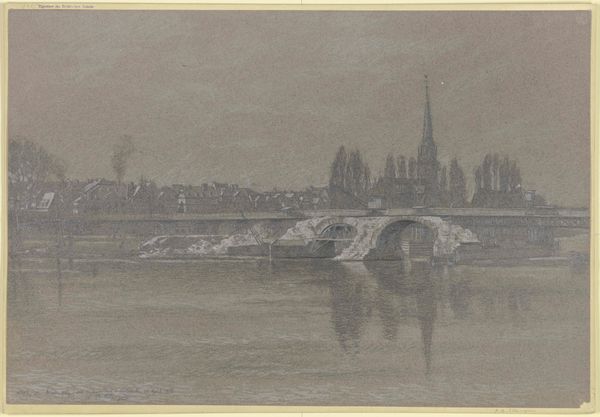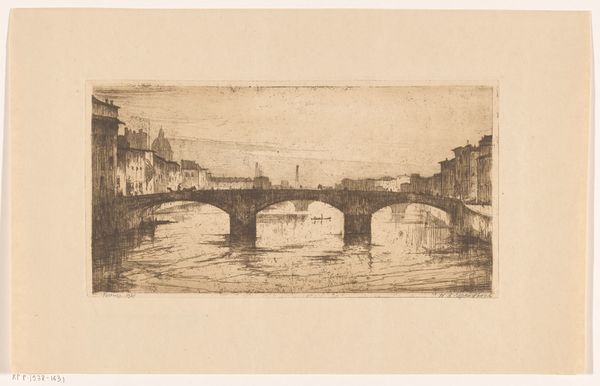
drawing, print, paper, charcoal
#
pencil drawn
#
drawing
# print
#
landscape
#
paper
#
water
#
cityscape
#
charcoal
Dimensions: 254 × 191 mm
Copyright: Public Domain
Editor: Here we have Joseph Pennell's "The Bridge of Toledo, Madrid," a charcoal drawing dating to about 1903. There’s a stark, almost gloomy quality to the rendering of this cityscape. What grabs your attention in this work? Curator: The bridge, dominating the foreground, is not just a structure but a potent symbol. Think about what bridges represent: connections, crossings, transitions. Now consider early 20th century Spain, on the cusp of immense social and political change. Pennell's choice of subject becomes particularly charged when we start asking whose voices are amplified by these transitions, and who is marginalized or excluded from the narratives of progress symbolized by that imposing architectural construction. Do you see something in how it’s drawn that tells us more? Editor: The strong contrast, maybe? The heavy shadows almost feel oppressive. Curator: Precisely. That play of light and shadow speaks volumes. It evokes a sense of something solid, but it's built atop deep divisions. Are those arches open for everyone, or only for certain types of passage? Consider also who gets to represent places like Madrid. Pennell was an American expatriate. How might his outsider perspective affect how he understood or conveyed the city? Is he reinforcing or challenging dominant narratives of Spanish identity and modernity? Editor: So it's not just a nice drawing of a bridge. It's about power and perspective too? Curator: Absolutely. It invites us to think critically about how urban spaces are shaped by social forces and individual viewpoints, and how even a seemingly straightforward cityscape carries layered meanings around cultural identity and social hierarchy. Editor: That definitely shifts my understanding of the piece. It makes me consider art as more than just something pretty. Curator: It becomes a historical document, reflecting its particular moment in time, urging us to examine what stories are being told – and whose are being left out.
Comments
No comments
Be the first to comment and join the conversation on the ultimate creative platform.

